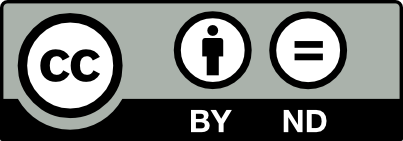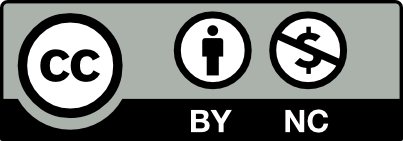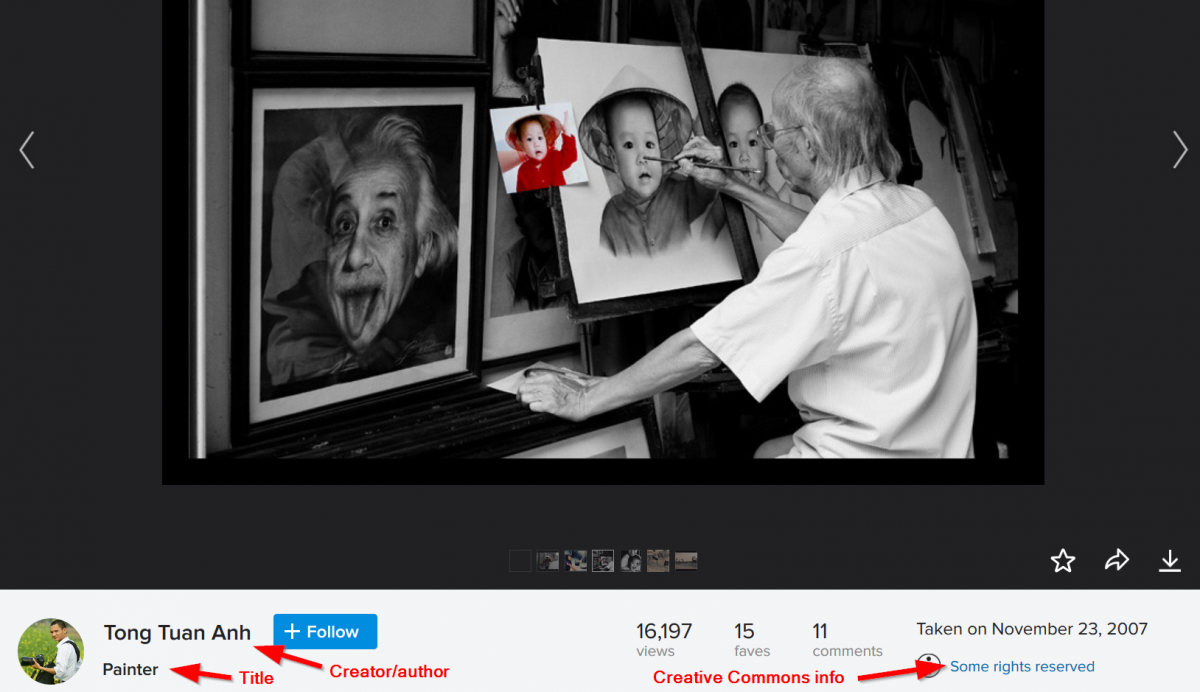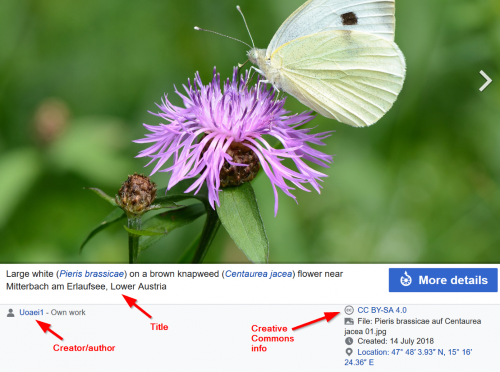- DSI CLEAR
- Theory & Practice
- Accessibility Online
- Copyright Guide
- Dos & Don'ts
- Videos on Copyright
- Usable Works
- Video Hosting Practices
- Compliance Checklist
- Checking Images for Infringement
- Creative Commons
- Public Domain & Licensing
- Exceptions & Defenses
- Copyright Statement Example
- More Copyright Resources
- Textbook Publisher Permissions
- Frequently Asked Questions
- Glossary of Copyright & Trademark Terms
- Subject Release Form
- Online Teaching
- UNT Syllabus Template
- Teaching Consultation Request
Understanding Creative Commons
Last Updated: 7/20/2021 13:30

Creative Commons gives creators a simple, standardized way to selectively license copyright permissions to their creative work.
Contents
License Types
Creative Commons offers creators a wide range of licensing terms. Some are very permissive, and others are restrictive. Below are the primary types of licenses Creative Commons offers. Regardless of the type of license offered, Creative Commons requires we keep intact all copyright notices for the work and give the original author/creator credit "reasonable to the medium or means [we] are utilizing" to convey attribution. This includes the author/creator name, if supplied; title of the work, if supplied; to the extent reasonably practicable, the web address associated with the work; and the license type and version. In the case of a derivative work, please include a credit identifying the use of the original work in the derivative work.
CC0 
Creative Commons Zero attempts to commit the work to the public domain, without the formal procedures required for such commitment. The creator has reserved no rights in the work. A third party may copy, distribute, display/perform, sell, and create derivative works of the original creation.
PLEASE NOTE: Works committed to the public domain via CC0, do NOT require an attribution of any kind. Any work in the public domain may be used without attribution.
CC BY 
For the Creative Commons Attribution (CC BY) license terms, one of the major restrictions on the use of the work is that it must be attributed to the original author whenever copied, distributed, displayed/performed, sold, or made a part of a derivative work. Best practices for crafting CC attributions include captioning an image or ascribing another type of work with the title of the work as a link back to the original web site, the name of the creator, and a linked name of the license term abbreviation. An example would be:
Captions usually appear directly below or above the image.
CC BY-SA
![]()
The first major restriction of the Creative Commons Attribution-ShareAlike (CC BY-SA) license terms is to include attribution to the original author, just as above with the CC BY terms. The second restriction is that whenever a derivative work is created, such as when someone remixes, tweaks, or builds upon the original author's work, the person who modifies the original work must license their new creation under the identical terms. This gets complicated when combining works that are unlicensed and licensed under different Creative Commons terms. Fortunately, guidance on how to combine and remix diversely licensed works can be found at the Creative Commons FAQ page.
Whenever you need to use a CC BY-SA licensed work, such as an image, it is important to include the following attribution line directly below the work as a caption. The only things that should be changed to the line are the title of the work in quotes (with accompanying link), the author's name, and the version of the CC BY-SA terms, where applicable:
- The above image, "Inspiration" by Patrick Verstappen, is licensed under CC BY-SA 2.0. All other content herein is licensed and copyright under different terms and by different parties.
CC BY-ND 
The Creative Commons Attribution-NoDerivatives (CC BY-ND) license terms carry the same attribution requirement as the CC BY terms, plus the additional restriction against the creation of derivative works. Derivative works are modified versions or "new" versions of the creative work. A derivative work can be created through dramatic changes, or subtle ones, such as cropping, color corrections, or the addition/removal of elements of the work. The only permissible methods of modification are: (a) conversion of format, such as from a JPG to a PNG, or a DOC to a PDF; and (b) resizing of the image. As such, if you use a work licensed under these terms, you must not modify it in any other way beside these two mentioned here.
CC BY-NC 
The Creative Commons Attribution-NonCommercial (CC BY-NC) license terms carry the same attribution requirement as the CC BY terms, plus the additional restriction against the use of the work for "commercial advantage or monetary compensation." Since this institution is a non-profit, accredited institution of higher education, our uses should qualify as NonCommercial.
All Other Licenses
All other Creative Commons licenses are a combination of the above sets of terms. As of 11/8/2019, UNT representatives are permitted to utilize works in their courses under any of the above license terms, or any combination thereof.
Common Sources of Creative Commons Media
The three most common sources of CC media are Flickr.com, the Wikimedia Commons, and TED talks. Below are guides to quickly finding the information you need to write your own attribution caption.
Flickr.com
To locate CC attribution information in Flickr, when viewing the image, you will find the photographer/author of the image just below the image on the left. Underneath that will be the title of the work, and on the far right just below the image you will see text that either says "All Rights Reserved" or "Some Rights Reserved." If it says "All Rights Reserved" then you may not use it. It is not licensed under the Creative Commons. However, if it states "Some Rights Reserved," click those words and your browser will open a page on the Creative Commons web site with the license version. The example screen capture of Flickr below shows the locations of each of these pieces of information:

I also does not hurt to link back to a photographer's work, even when it is not required, as a matter of academic best practice and good will.
Wikipedia & Wikimedia Commons
Likewise, all the information you require for a Creative Commons attribution caption can be found just below the image on Wikimedia Commons. The title, followed by the photographer/author, are just below the photo on the left, and the Creative Commons license type and version are just below the image on the right. The screen capture image below shows their exact location.

To form your own caption, copy the example above under CC BY. Replace the title with your image's title, then replace the photographer/author's name, and then, if necessary, replace the CC type and version with the appropriate one listed for the source image. And for good measure, link the title back to the original web page, and the license to the license page.
You may also see a web page similar to the following. The same rules of forming the attribution caption apply. The pieces of information are just in different locations.

TED Talk Attribution Caption 
All TED and TEDx talks are licensed under the CC BY-NC-ND 4.0 license terms. Any time a TED or TEDx talk is embedded in a UNT page, please include a Creative Commons attribution caption, regardless of whether the TED talk is in YouTube or directly on the TED.com web site. However, if you link out to a TED video, no caption is needed. A good example for the format for a TED talk attribution caption would be:
- "Your body was forged in the spectacular death of stars,” by TED and Enrico Ramirez-Ruiz is licensed under CC BY-NC-ND 4.0.
Additional Reading
| What do Public Domain & Creative Commons Mean? Learn about the differences from the Harvard Law School Library and learn where to find media. |
Creative Commons— Best practices for attribution One condition of all CC licenses is attribution. This article includes good examples of attribution. |
| Understand the types of Creative Commons licenses Peruse the “human-readable” version of the CC license terms and conditions. |
Attributing Creative Commons Materials The CC Australian team developed this helpful guide to attributing works in different formats. |
| Creative Commons— License Versions Compare license versions. |
Creative Commons — License Creator Tool Search reliable sources for creative works including media, images, video, audio, music, web. |
| Creative Commons FAQs This contains basic and detailed information. |
Creative Commons Search Search reliable sources for creative works including media, images, video, audio, music, web. |
Research in-depth information from other external sources in Resources.
Search these multiple sources to Locate Usable Work — text, images, videos, and audio.